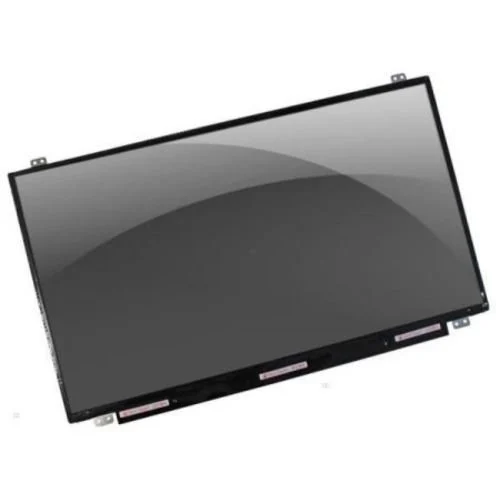Introduction
Welcome to “Unlocking Brilliance: Laptop Display Deep Dive.” In this exploration of cutting-edge technology and visual innovation, we embark on a journey through the captivating realm of laptop displays. As we delve into this fascinating subject, we will unravel the intricate layers that contribute to the brilliance and vibrancy of modern laptop screens.
From the evolution of display technologies to the behind-the-scenes engineering marvels, “Unlocking Brilliance” invites you to discover the inner workings of these visual powerhouses that have become integral parts of our daily lives. Join us as we uncover the secrets behind color accuracy, resolution advancements, refresh rates, and the seamless integration of hardware and software to create a truly immersive viewing experience.
With each chapter, we will demystify complex terminologies and delve into the science that drives the magic of laptop displays. Whether you’re a tech enthusiast, a professional seeking the perfect screen for creative work, or simply curious about the technology you interact with, this deep dive will provide you with the knowledge to appreciate and understand the brilliance that unfolds before your eyes.
Types of Laptop Display Panels
Laptop displays have evolved significantly over the years, leading to the development of various types of display panels. Each panel type offers unique characteristics in terms of color accuracy, viewing angles, response times, power efficiency, and more.
Twisted Nematic (TN) Panels:
- TN panels are one of the oldest and most common display technologies.
- They offer fast response times and are often used in gaming laptops due to their high refresh rates.
- However, TN panels usually have limited color accuracy and narrow viewing angles compared to other types.
In-Plane Switching (IPS) Panels:
- IPS panels provide better color accuracy, wider viewing angles, and improved color consistency.
- They are popular in laptops for content creation, graphic design, and tasks where accurate color representation is crucial.
- IPS panels generally have slightly slower response times compared to TN panels.
Vertical Alignment (VA) Panels:
- VA panels offer good contrast ratios and deep blacks, making them suitable for multimedia consumption.
- They provide better color accuracy and wider viewing angles compared to TN panels but may not match the color accuracy of IPS panels.
OLED Panels:
- OLED (Organic Light Emitting Diode) panels offer exceptional color reproduction, high contrast ratios, and true blacks.
- Each pixel emits its own light, resulting in vibrant colors and deep blacks.
- OLED panels are often found in premium laptops due to their superior visual quality, but they can be more susceptible to burn-in over time.
MicroLED Panels:
- MicroLED is an emerging technology that combines the advantages of OLED and traditional LED displays.
- It offers high brightness, color accuracy, and energy efficiency.
- MicroLED panels are still in the early stages of adoption and are expected to become more widespread in the future.
Mini-LED Panels:
- Mini-LED technology uses smaller LED backlights to improve local dimming and contrast.
- This technology enhances HDR (High Dynamic Range) performance and reduces blooming in dark scenes.
- Mini-LED displays are particularly well-suited for laptops that prioritize image quality.
E Ink Panels:
- E Ink displays are known for their exceptional battery life and readability in various lighting conditions.
- They are commonly found in e-readers and some specialized laptops designed for minimalistic tasks.
Reflective Panels:
- Reflective displays use ambient light to enhance visibility and reduce power consumption.
- They are well-suited for outdoor use and can be found in certain rugged or specialized laptops.
Exploring color calibration tools for laptop displays
Color calibration tools are essential for ensuring accurate and consistent color representation on laptop displays. These tools help adjust various display parameters to match industry standards and personal preferences.
Hardware Calibration Devices:
-
Colorimeters:
These devices measure the actual colors displayed on the screen and generate calibration profiles. Examples include the X-Rite i1Display and Datacolor Spyder series.
-
Spectrophotometers:
These devices offer more precise color measurements by analyzing the spectral properties of light. They are often used in professional settings for critical color accuracy.
Calibration Software:
-
DisplayCal (formerly known as dispcalGUI):
This open-source software works with hardware calibration devices to create accurate color profiles for monitors.
-
X-Rite i1Profiler:
It’s software designed to work with X-Rite’s hardware calibration devices and offers advanced calibration and profiling options.
-
Datacolor SpyderX Pro:
This software works in conjunction with Datacolor’s hardware calibration devices and provides user-friendly calibration options.
Built-in OS Calibration Tools:
-
Windows Color Calibration:
Built into the Windows operating system, this tool guides users through adjusting gamma, brightness, contrast, and color balance.
-
macOS Display Calibrator Assistant:
macOS includes a built-in calibration assistant that helps users adjust display settings for better color accuracy.
Online Calibration Services:
- Some display calibration tools offer web-based solutions that guide users through calibration steps, often using the laptop’s built-in camera and the user’s smartphone to measure colors.
Mobile Apps:
- Some mobile apps, such as the X-Rite ColorTRUE app, allow you to calibrate your laptop’s display using your smartphone or tablet as a reference.
Choosing the Right Laptop Display for Your Needs
Choosing the right laptop display for your needs involves considering various factors to ensure that the display meets your preferences and requirements.
Resolution:
Higher resolutions, such as Full HD (1920×1080), Quad HD (2560×1440), and 4K (3840×2160), offer sharper and more detailed visuals.
Choose a resolution based on your usage: casual browsing, content creation, or gaming.
Panel Type:
IPS:
Offers wide viewing angles and accurate colors; ideal for content creators, designers, and professionals.
TN:
Faster response times and higher refresh rates; suitable for gaming.
OLED:
uperior color reproduction and contrast; great for multimedia and premium laptops.
Color Accuracy:
If color accuracy is essential (e.g., photo editing or graphic design), opt for a laptop with a display that supports high color gamuts (sRGB, AdobeRGB, DCI-P3) and consider hardware calibration options.
Brightness and Contrast:
Consider the display’s brightness level (measured in nits) for comfortable viewing in various lighting conditions.
Higher contrast ratios provide better differentiation between dark and light areas of the screen.
Refresh Rate:
Higher refresh rates (e.g., 120Hz, 144Hz, or even 240Hz) offer smoother motion, which is beneficial for gaming and fast-paced content.
Touchscreen:
Touchscreens can enhance user interaction, especially for 2-in-1 laptops or creative tasks like drawing and note-taking.
Battery Life:
Higher-resolution displays and those with high refresh rates can consume more power.
Consider the impact of display technology on battery life and choose accordingly.
Budget:
Premium display technologies (e.g., OLED, high-refresh-rate IPS) are often more expensive.
Balance your preferences with your budget to find the best fit.
Intended Use:
Gaming laptops benefit from high refresh rates and low response times.
Creative professionals require color-accurate displays with wide color gamuts.
General users might prioritize a balance between resolution, color, and battery life.
Read Reviews:
Research laptop models and read reviews to learn about display quality, color accuracy, and user experiences.
Conclusion
In conclusion, the world of laptop displays is a captivating realm where technology and visual innovation converge. “Unlocking Brilliance: Laptop Display Deep Dive” has taken us on a journey through the intricacies of these screens, revealing the remarkable engineering that transforms pixels into vibrant, immersive experiences.
From the foundational types of laptop display panels like TN, IPS, OLED, and more, to the essential tools for color calibration that ensure accurate and consistent representation of hues, we’ve explored the vital components that contribute to the brilliance we see on our screens. Whether it’s the fast response times of gaming-centric displays or the accurate color reproduction of panels designed for creative endeavors, the diversity of options caters to a wide range of preferences and tasks.
As technology continues to evolve, we find ourselves at the crossroads of innovation and possibility. The choice of the right laptop display becomes more crucial than ever, as these screens become our windows to the digital world. Through understanding resolution, panel type, color accuracy, and the interplay between hardware and software calibration, we empower ourselves to make informed decisions that align with our unique needs.



